How to play Canadian Checkers?
Canadian checkers, also known as Canadian draughts, is a variant of the traditional game of checkers that is popular in Canada and some other parts of the world. The game may look intimidating because it's one of the largest Checkers variants but the rules are the same as International Draughts applied to a 12x12 board. Brazilian Draughts has the same rules as Canadian and International Draughts but is played on an 8x8 board. In this article, we will take a look at the rules of Canadian checkers.
Board and Setup
The board for Canadian checkers is similar to a standard checkers board but with 144 squares arranged in an 12x12 grid. The game is played on the dark squares of the board and oriented so that the bottom right corners are dark squares. Each player starts with 30 pieces, which are placed on the dark squares of the first five rows on their side of the board.

Movement
In Canadian checkers, pieces move diagonally, one square at a time. If a player's piece reaches the opposite end of the board, it becomes a "king" and gains the ability to move and capture both forward and backward any number of spaces along the diagonal.
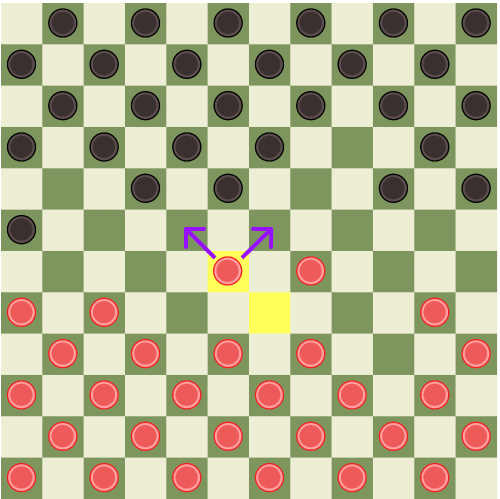
Capturing
Capturing is an important aspect of Canadian checkers. When a player's piece lands on a square adjacent to an opponent's piece, and there is an empty square on the other side, the player must "jump" over the opponent's piece and capture it.
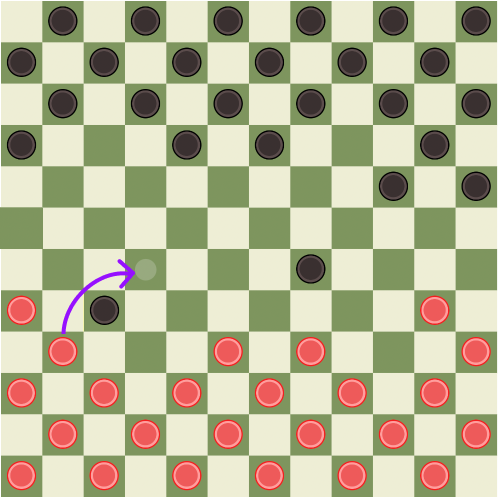
The piece must continue jumping in this fashion during the turn until there are no more enemy pieces adajacent to its landing square. This is called a multi-capture or multi-hop.
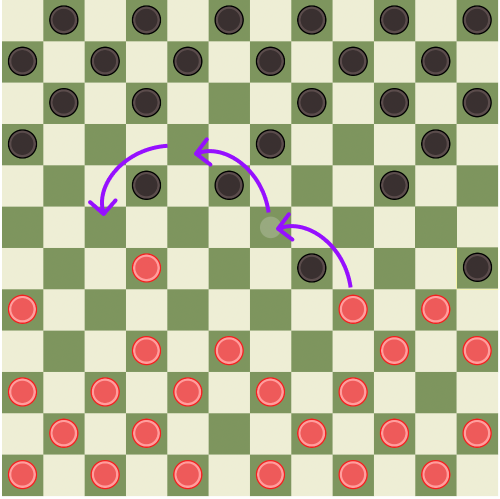
A player must take a jump even if the enemy piece is behind it.
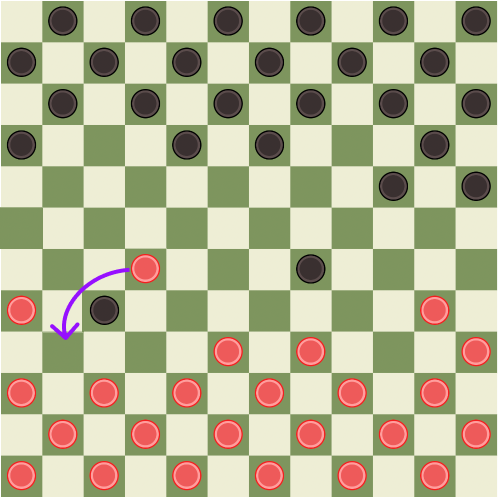
If there are multiple captures available, the player must choose the one that captures the most pieces.
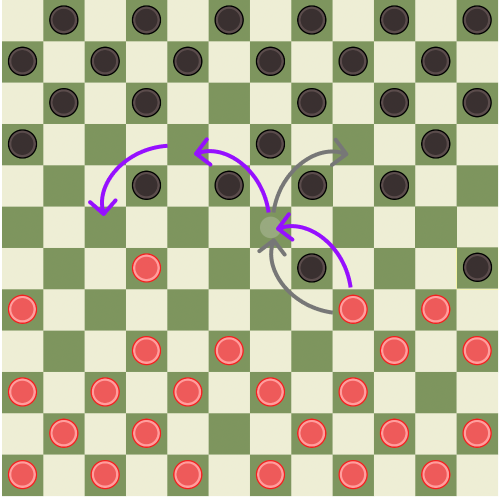
In the scenario above, the purple arrows show the only valid move red can make. The gray arrows show a potential move that is not valid because it only captures two pieces to the purple arrow move's three.
If a player's piece end its turn on the last row of the opponent's side of the board the piece will be "crowned" by promoting it to a king. However, a piece will not be crowned if it passes through the opponent's home row during a multi-capture move. The mandatory capture rule applies even when on the opponent's home row, so a player may not forgo a capture in order to crown their piece.
When a player's piece is captured, it is removed from the board.
Winning the Game
A player wins the game by capturing all of their opponent's pieces, or by putting their opponent in a position where they cannot make a move.
Draws
In Canadian checkers, a draw occurs when the same position occurs three times with the same player to move, or when a player has no pieces left on the board, but their opponent cannot capture their last piece.
